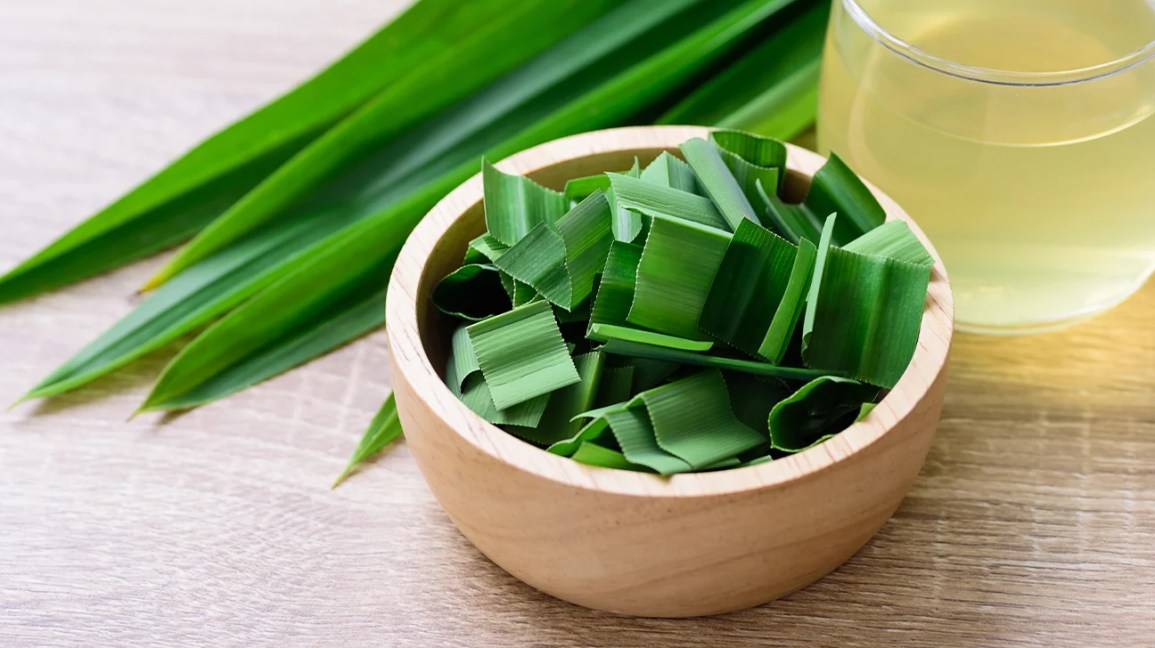Pandan is a tropical plant popularly used in Southeast Asian cuisine. The taste of pandan can be described as fragrant, floral, and slightly sweet. Some people compare its flavor to that of vanilla or almond, with hints of grassiness and a subtle nutty undertone. Pandan is often used in desserts, such as puddings, cakes, and flavored rice dishes, to add a unique aroma and enhance the overall taste.
Know More About what does pandan taste like
Pandan: A Unique Flavor with a Taste of the Tropics
Introduction:
Imagine yourself strolling down the vibrant streets of Southeast Asia, where the air is filled with captivating scents and the sound of sizzling street food. Amidst this sensory overload, one flavor stands out and demands attention – pandan. Pandan, also known as “screwpine,” is a tropical plant renowned for its sweet, aromatic leaves that have become an integral part of the region’s culinary traditions. In this article, we will explore the exotic and captivating flavor of pandan and how it enhances various dishes.
A Captivating Flavor Profile:
Pandan has a flavor profile that is difficult to compare to any other ingredient. It offers a unique combination of sweet, floral, and slightly nutty notes, evoking a sense of nostalgia and warmth. Some describe it as a cross between vanilla and coconut, offering a taste that is both delicate and distinctive. Whether used in desserts, beverages, or savory dishes, the flavor of pandan adds an unparalleled depth and complexity, elevating any recipe it is included in.
Pandan in Sweet Treats:
One of the primary applications of pandan in Southeast Asian cuisine is in sweet treats. From traditional kuih and cakes to refreshing ice creams and puddings, pandan is a staple flavor that brings delight to taste buds. In Malaysian cuisine, for example, pandan is a fundamental component in the making of pandan chiffon cake – a fluffy, fragrant dessert that embodies the essence of the tropics. The unique flavor of pandan can also be found in vibrant green-colored kaya jam, a coconut and pandan custard spread, which is often paired with toast for a delectable breakfast.
Pandan in Beverages:
Pandan’s alluring flavor extends beyond desserts and permeates into a wide range of beverages. In Southeast Asia, pandan-infused drinks are exceptionally popular, offering a refreshing respite from the tropical heat. Perhaps the most celebrated example is pandan-infused coconut water, a harmonious blend of the plant’s fragrant essence with the natural sweetness of coconut water. This pairing creates a truly divine taste that refreshes and rejuvenates, transporting you to an idyllic tropical island with each sip. The flavor of pandan can also be experienced in vibrant green smoothies, teas, and even cocktails, tantalizing taste buds with its distinctive allure.
Pandan in Savory Delights:
While pandan is predominantly known for its presence in sweet dishes, it can also lend its unique flavor to savory dishes. In Thai cuisine, pandan leaves are used to wrap delicate parcels of seasoned chicken or fish, infusing the ingredients with its captivating aroma during the cooking process. Known as “hor mok” or “chu chee,” these dishes showcase the versatility of pandan as it enhances the natural flavors of the ingredients, creating an unforgettable dining experience.
Conclusion:
Pandan, with its captivating sweet, floral, and nutty notes, truly encapsulates the essence of Southeast Asian cuisine. Its versatile flavor profile is constantly featured in an array of dishes, from sweet desserts to refreshing beverages and savory delicacies. The unique taste of this tropical plant has the power to transport your palate to faraway lands, leaving an indelible mark on your culinary journey. So, the next time you encounter pandan in a recipe, embrace the opportunity to embark on a flavorful adventure that will bring you closer to the vibrant and diverse tastes of Southeast Asia.
FAQs on what does pandan taste like
Q1: What does pandan taste like?
A1: Pandan has a unique flavor that can be described as sweet, floral, and slightly nutty, with hints of coconut and vanilla.
Q2: Does pandan taste similar to vanilla?
A2: Yes, pandan does have some similarities to vanilla, but it also has a distinct flavor profile. It has a more complex and earthy taste compared to pure vanilla.
Q3: Is pandan taste similar to coconut?
A A3: Pandan does have a subtle resemblance to coconut, as it shares some flavor components with it. However, it is important to note that pandan has its own distinct taste.
Q4: Can you compare pandan with jasmine?
A4: While both pandan and jasmine have floral notes, pandan has a stronger aroma with a nuttier undertone, whereas jasmine is more delicate with a sweeter fragrance.
Q5: Is pandan taste strong or overpowering?
A5: Pandan has a strong fragrance, but its taste is not overpowering. It imparts a pleasant, fragrant flavor without dominating other ingredients in a dish.
Q6: Does pandan taste sweet?
A6: Pandan possesses a natural sweetness, but it is not excessively sweet. Its flavor can best be described as subtly sweet.
Q7: Can pandan taste be described as grassy?
A7: Pandan is sometimes referred to as having a grassy or hay-like taste due to its plant origin. However, this flavor is balanced with its other floral and nutty undertones.
Q8: Is pandan flavor prominent in desserts?
A8: Yes, pandan is commonly used in various Asian desserts due to its unique flavor. It adds a distinctive taste and aroma that enhances the overall taste of a dessert.
Q9: Can pandan taste be overpowering in savory dishes?
A9: When used in savory dishes, pandan is typically added in smaller amounts, and its flavor blends well with other ingredients without overpowering the dish.
Q10: Does cooking pandan alter its taste?
A10: Cooking pandan actually enhances its flavor, allowing it to release more of its aromatic compounds and intensify the taste.




Leave a Reply